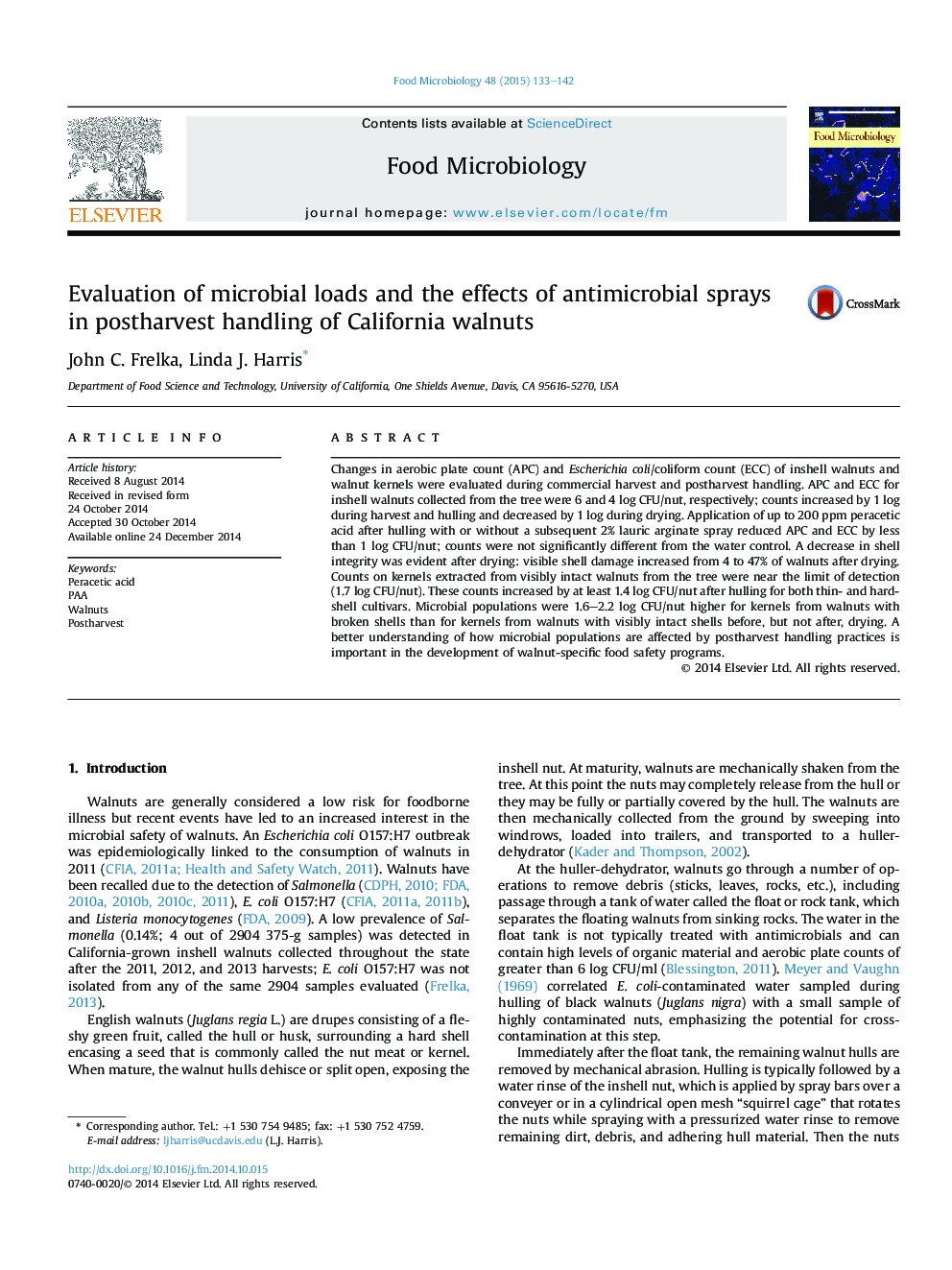| Article ID | Journal | Published Year | Pages | File Type |
|---|---|---|---|---|
| 4362797 | Food Microbiology | 2015 | 10 Pages |
•Aerobic plate and Escherichia coli/coliform counts determined for inshell walnuts and kernels.•Microbial counts increased during harvest and hulling steps.•Microbial reductions during drying were small.•Application of a peracetic acid spray after hulling had minimal impacts on microbial loads on walnuts.•Kernels from walnuts with visibly damaged shells had significantly higher counts than kernels from intact shells.
Changes in aerobic plate count (APC) and Escherichia coli/coliform count (ECC) of inshell walnuts and walnut kernels were evaluated during commercial harvest and postharvest handling. APC and ECC for inshell walnuts collected from the tree were 6 and 4 log CFU/nut, respectively; counts increased by 1 log during harvest and hulling and decreased by 1 log during drying. Application of up to 200 ppm peracetic acid after hulling with or without a subsequent 2% lauric arginate spray reduced APC and ECC by less than 1 log CFU/nut; counts were not significantly different from the water control. A decrease in shell integrity was evident after drying: visible shell damage increased from 4 to 47% of walnuts after drying. Counts on kernels extracted from visibly intact walnuts from the tree were near the limit of detection (1.7 log CFU/nut). These counts increased by at least 1.4 log CFU/nut after hulling for both thin- and hard-shell cultivars. Microbial populations were 1.6–2.2 log CFU/nut higher for kernels from walnuts with broken shells than for kernels from walnuts with visibly intact shells before, but not after, drying. A better understanding of how microbial populations are affected by postharvest handling practices is important in the development of walnut-specific food safety programs.
